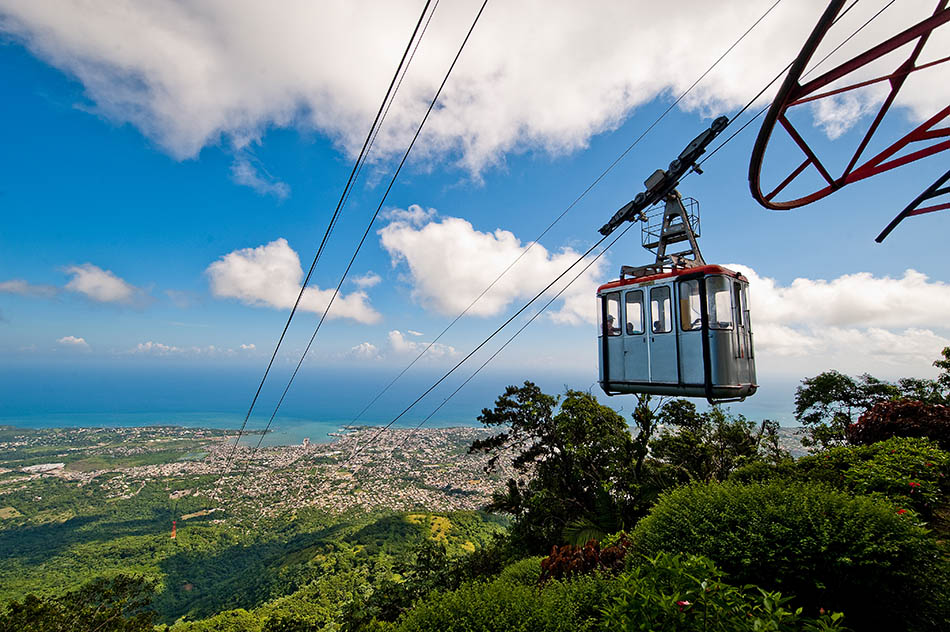 Humpback whales, which are baleen whales measuring about 16 meters or 52 feet long, derived their name from the way they arch backward before they dive. It is just a wonderful sight, the effortless maneuver from such graceful acrobats of the sea.
Humpback whales, which are baleen whales measuring about 16 meters or 52 feet long, derived their name from the way they arch backward before they dive. It is just a wonderful sight, the effortless maneuver from such graceful acrobats of the sea.These whales, however, are becoming endangered, with less than 50 000 of them still alive in the Southern region. The good news is that some efforts are done to conserve these interesting species. In fact, there is one major event in the Dominican Republic where whale-watching during the months of January to March is observed. During the first quarter of the year, the humpback whales return to Samana Bay for their mating season. Apart from the Dominican Republic, only France gets to see these whales during the winter days.
Humpback whale-watching is not just an interesting adventure to seek when going to Dominican Republic. It is also a conscious and active part of an eco-tourism campaign by the country. This helps impart to the public the importance of taking care of the animals and their natural habitat for greater sustainability of our own environment and the Earth's resources.
For such efforts, we must salute the Dominican flag for being a critical part of the conservation of these precious mammals, which in one way or another is integral to our own conservation as the human race since we share the same planet with them. Being interlinked in this whole web of life, saving them means saving ourselves, as well.
Humpback
whales, which are baleen whales measuring about 16 meters or 52 feet
long, derived their name from the way they arch backward before they
dive. It is just a wonderful sight, the effortless maneuver from such
graceful acrobats of the sea.
These whales, however, are becoming endangered, with less than 50 000 of them still alive in the Southern region. The good news is that some efforts are done to conserve these interesting species. In fact, there is one major event in the Dominican Republic where whale-watching during the months of January to March is observed. During the first quarter of the year, the humpback whales return to Samana Bay for their mating season. Apart from the Dominican Republic, only France gets to see these whales during the winter days.
Humpback whale-watching is not just an interesting adventure to seek when going to Dominican Republic. It is also a conscious and active part of an eco-tourism campaign by the country. This helps impart to the public the importance of taking care of the animals and their natural habitat for greater sustainability of our own environment and the Earth's resources.
For such efforts, we must salute the Dominican flag for being a critical part of the conservation of these precious mammals, which in one way or another is integral to our own conservation as the human race since we share the same planet with them. Being interlinked in this whole web of life, saving them means saving ourselves, as well.
Article Source: http://EzineArticles.com/3843970
These whales, however, are becoming endangered, with less than 50 000 of them still alive in the Southern region. The good news is that some efforts are done to conserve these interesting species. In fact, there is one major event in the Dominican Republic where whale-watching during the months of January to March is observed. During the first quarter of the year, the humpback whales return to Samana Bay for their mating season. Apart from the Dominican Republic, only France gets to see these whales during the winter days.
Humpback whale-watching is not just an interesting adventure to seek when going to Dominican Republic. It is also a conscious and active part of an eco-tourism campaign by the country. This helps impart to the public the importance of taking care of the animals and their natural habitat for greater sustainability of our own environment and the Earth's resources.
For such efforts, we must salute the Dominican flag for being a critical part of the conservation of these precious mammals, which in one way or another is integral to our own conservation as the human race since we share the same planet with them. Being interlinked in this whole web of life, saving them means saving ourselves, as well.
Article Source: http://EzineArticles.com/3843970
Comentarios
Publicar un comentario